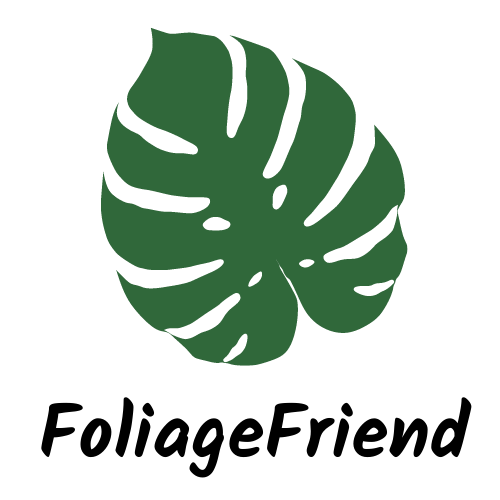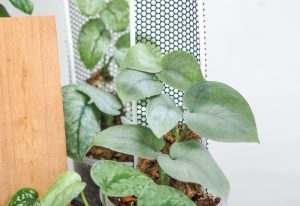If you’re a bearded dragon owner, you know that providing a balanced diet is crucial to their health. While bearded dragons are omnivorous, not all plants are safe for them to eat. In this article, we’ll discuss whether bearded dragons can safely consume Pothos plants.
Understanding Pothos Plants
Characteristics
Pothos plants, also known as Devil’s ivy, are fast-growing and easy-to-care-for plants. They are commonly used as decorative plants in households and offices due to their ability to thrive in various conditions. Their leaves are heart-shaped and have a glossy appearance, which adds to their aesthetic appeal.
Toxic Components
While pothos plants may seem harmless, they contain certain toxic components that can be harmful to animals, including bearded dragons. One of the primary toxins in pothos plants is calcium oxalate crystals, which can cause burning, swelling, and irritation if ingested by a bearded dragon1.
In addition to calcium oxalate crystals, pothos plants contain saponins, which are toxic to many animals2. If a bearded dragon consumes parts of a pothos plant containing saponins, they may experience vomiting, diarrhea, and difficulty breathing. In severe cases, saponins can be fatal2.
When it comes to bearded dragons’ diet, it is important to remember that certain plants, including pothos, have high amounts of oxalic acid and should only be consumed in smaller amounts3. Feeding a bearded dragon too much of a pothos plant can lead to health issues.
Bearded Dragon Diet
General Guidelines
A bearded dragon’s diet should be carefully balanced to include a variety of foods that provide essential nutrients. It’s crucial to maintain an appropriate ratio of fruits, vegetables, and insects in their meals. For adult dragons, 80% of their diet should consist of fruits, vegetables and greens, while the remaining 20% should be insects. On the other hand, young dragons need 20% fruits, vegetables, and greens, and 80% insects in their diet.
Feeding them properly prepared foods is essential to avoid digestive issues and other health problems. Make sure to chop the fruits and vegetables in appropriate sizes to prevent impaction.
Safe Plants
Bearded dragons can consume other safe plants and vegetables as well. Some examples of safe plants for bearded dragons include:
- Collard greens
- Dandelion greens
- Mustard greens
- Turnip greens
- Squash
- Bell peppers
- Green beans
It’s important to regularly vary the types of plants and vegetables offered to bearded dragons to ensure they receive a balanced and diverse diet. Providing them with a variety of safe plants can help promote their overall health and well-being. Remember to always avoid feeding them toxic or potentially harmful plants, such as onions, avocado, or rhubarb. source.
Risks of Feeding Pothos to Bearded Dragons
Feeding pothos to bearded dragons carries significant risks, as these plants contain toxic substances that are harmful to these reptiles. Pothos plants are known to have calcium oxalate crystals, which can cause burning, swelling, and irritation if ingested by a bearded dragon1. Consumption of these plants can lead to serious health complications, such as vomiting, difficulty breathing, and even death2.
Moreover, pothos plants are not a natural source of nutrition for reptiles, and feeding them to bearded dragons over a long period can have an adverse effect on their health3. In addition to calcium oxalate crystals, pothos also contain saponins, which contribute to their toxicity4. If a bearded dragon consumes these compounds, they may experience symptoms like vomiting, diarrhea, and difficulty breathing. In severe cases, saponins can be fatal5.
It’s important to monitor a bearded dragon’s behavior and health if they are exposed to pothos plants. Signs of a potentially serious reaction may include:
- Diarrhea, soft stool, or changes in feces and urates
- Labored breathing
- Increased water consumption
- Face or mouth rubbing
- Hypersalivation
- Changes in activity levels
- Altered respiration rates
- Sudden weight loss6
Although it is best to avoid feeding pothos to bearded dragons altogether, you may consider using the plant as a decorative element in the reptile’s habitat. However, be sure to remove the plant immediately if you notice the dragon nibbling on it7. Overall, the safety and well-being of bearded dragons should take priority, and the safest course of action is to keep pothos plants out of their reach.
Symptoms of Pothos Ingestion in Bearded Dragons
Bearded dragons experiencing pothos ingestion may exhibit various symptoms due to its toxic nature. These symptoms can arise from the saponins found within the pothos plant, which are harmful to many animals, including bearded dragons1.
One of the first indicators that a bearded dragon has consumed pothos is drooling2. Additionally, the dragon may be seen scratching its mouth, attempting to alleviate the irritation caused by the plant’s milky sap3.
Another common symptom following pothos consumption is gastrointestinal distress. Bearded dragons may experience vomiting and diarrhea as their bodies attempt to rid themselves of the toxic substance1. This discomfort can also manifest in the form of lethargy, as the dragon’s energy levels may be affected by the poisoning2.
Lastly, breathing issues may arise as a result of pothos ingestion. Shallow breathing and dry heaving are likely to be observed in affected bearded dragons2. In severe cases, the saponins in pothos can lead to fatal consequences for these reptiles1.
To ensure the safety of bearded dragons, it is critical to monitor their surroundings and prevent access to pothos plants. Swift intervention and removal of the plant can minimize the risk of serious health complications for these beloved pets.
Preventative Measures
Environment Setup
To prevent your bearded dragon from consuming toxic plants such as pothos, it is essential to create an environment that discourages such behavior. Before introducing any plants into the enclosure, thoroughly research which plants are safe or toxic for bearded dragons. Make sure to provide a variety of suitable foliage decorations that will not pose any risks if ingested.
It is also essential to observe and monitor your bearded dragon’s behavior towards plants. If they start nibbling on any unsafe foliage or show any signs of discomfort or illness, promptly remove the plant and consult a veterinarian if needed.
Alternative Safe Plants
Instead of using pothos, consider these safer alternatives for decorating your bearded dragon’s habitat:
- Collard greens, beet greens, mustard greens, and turnip greens can provide natural foliage that is also nutritious for bearded dragons1.
- Plants like Callisia Repens (Turtle Vine), Carex buchananii (Red Rooster Ornamental Grass), and a variety of succulents, such as Jade Plants and Echeveria, are considered safe for bearded dragon environments2.
- Geranium is another suitable choice, as its leaves and flowers are safe for bearded dragons to consume3.
By creating a safe environment and selecting appropriate plants, you can ensure the wellbeing of your bearded dragon and prevent them from ingesting harmful plants like pothos.
What to Do If Your Bearded Dragon Eats Pothos
Immediate Actions
If you suspect your bearded dragon has ingested pothos, the first step is to remain calm and promptly remove any remaining pothos from their enclosure. Pothos is considered toxic to bearded dragons due to its calcium oxalate crystals, which can lead to health issues1. Monitoring your bearded dragon’s behavior closely will help you identify any concerning symptoms.
Next, offer your bearded dragon fresh water to help flush out the toxins and ease potential discomfort. Make sure to observe your pet for signs such as lethargy, difficulty breathing, or any changes in their appetite. It’s essential to identify any unusual behaviors early on to ensure proper treatment.
Seeking Veterinary Help
If you notice any concerning symptoms after your bearded dragon consumes pothos, it’s important to seek the advice of a professional. Consulting with a veterinarian who specializes in reptile care is the best course of action2. The veterinarian will likely conduct a thorough examination of your bearded dragon and recommend the appropriate treatment plan, should it be necessary.
In some cases, the consumption of pothos may only cause mild discomfort for your bearded dragon. However, more severe cases may require medical intervention such as administering fluids, pain relief medication, or other treatments specific to your pet’s condition. Remember that acting quickly and consulting with a specialist is crucial to maintaining the health of your bearded dragon.
Overall, it’s crucial to keep toxic plants like pothos out of reach from your bearded dragon and provide a safe environment for them to thrive. In the event of accidental ingestion, follow the immediate actions and seek veterinary help if necessary to ensure the well-being of your bearded dragon.
Helpful Video

My name is Daniel Elrod, and I have been houseplant love ever since I was 17. I love how much joy they bring to any room in the home. I’ve always been amazed at how a few pots of flowing leaves can turn a drab and sterile office into an inviting place where people love to work at.

















































































































































































































































